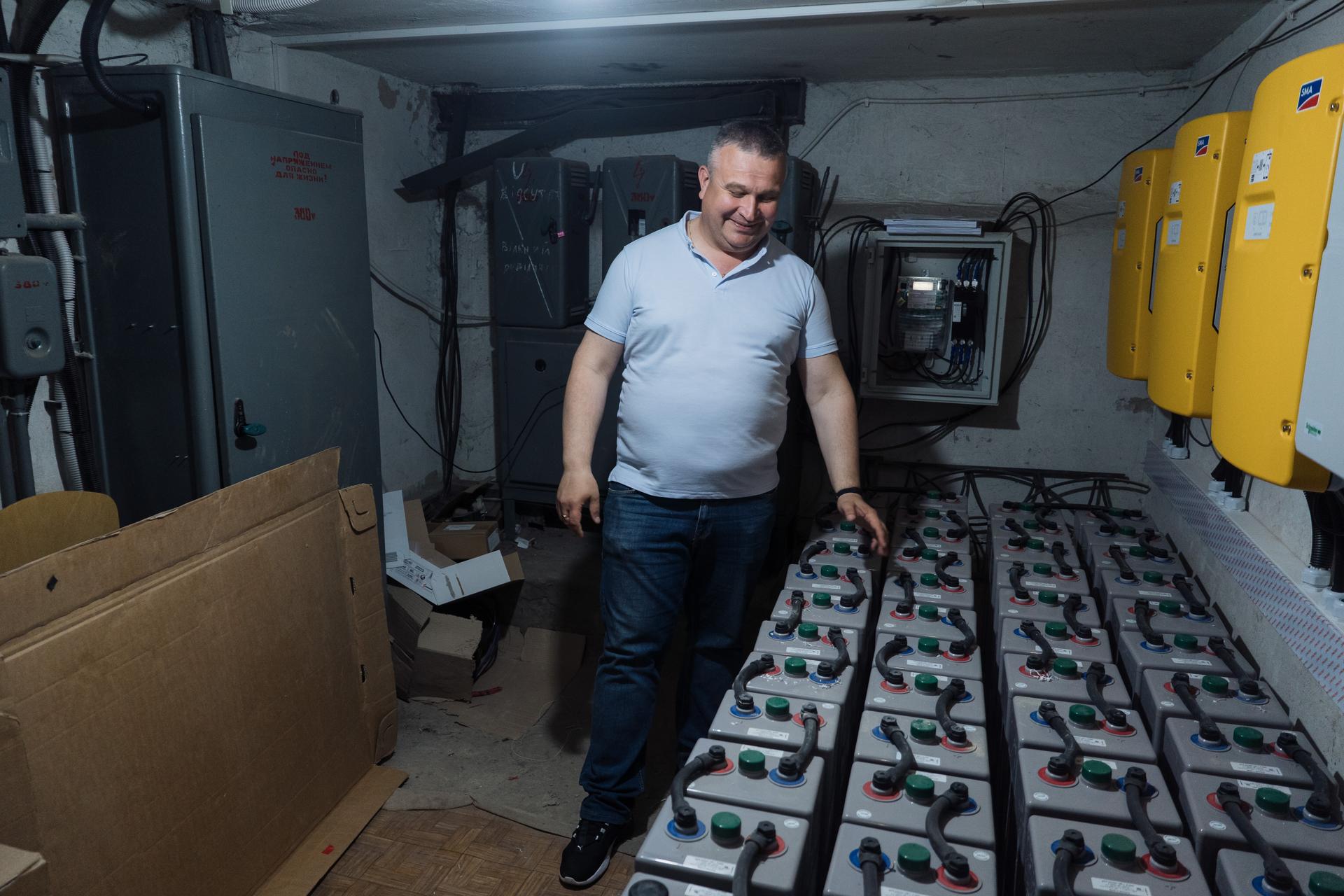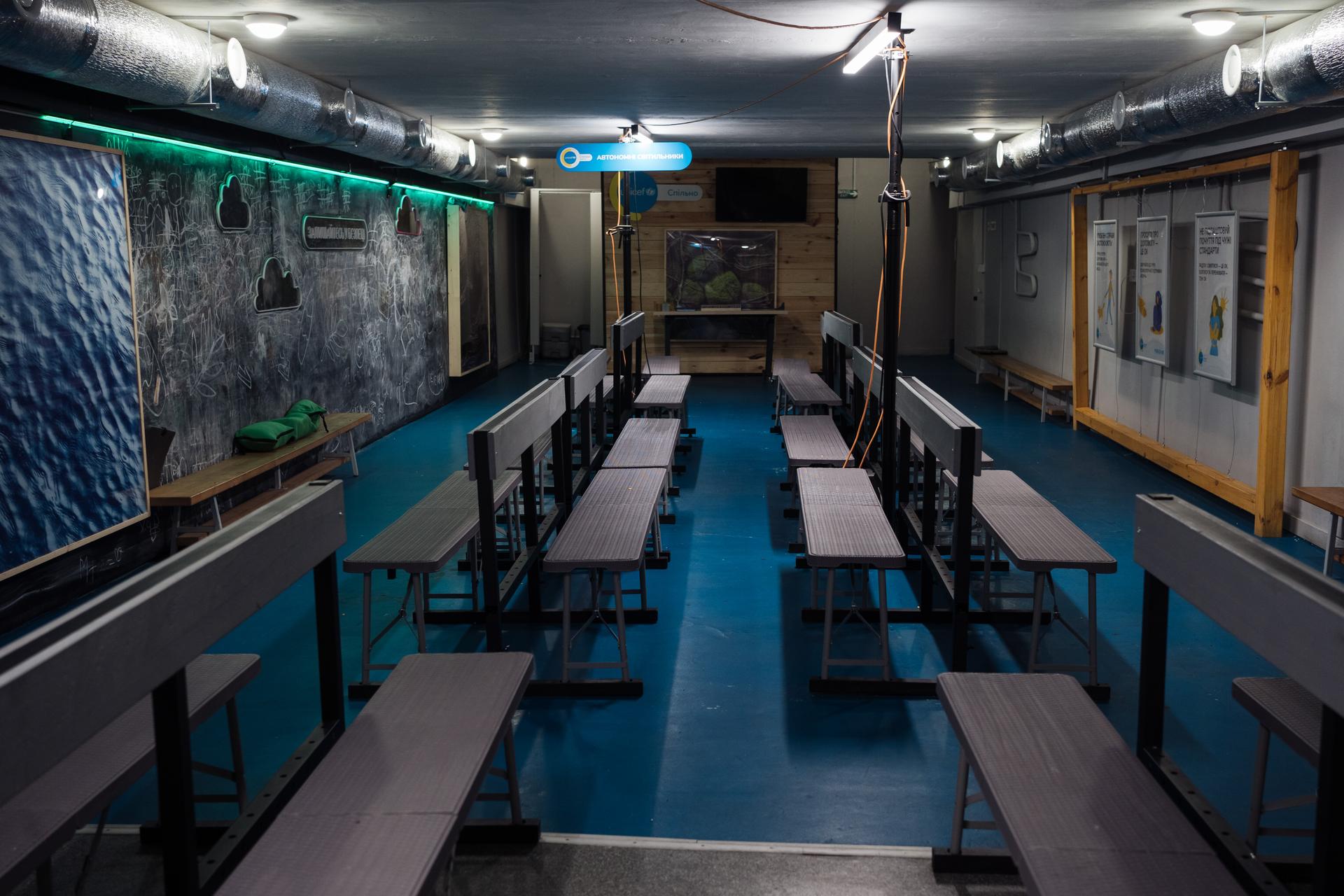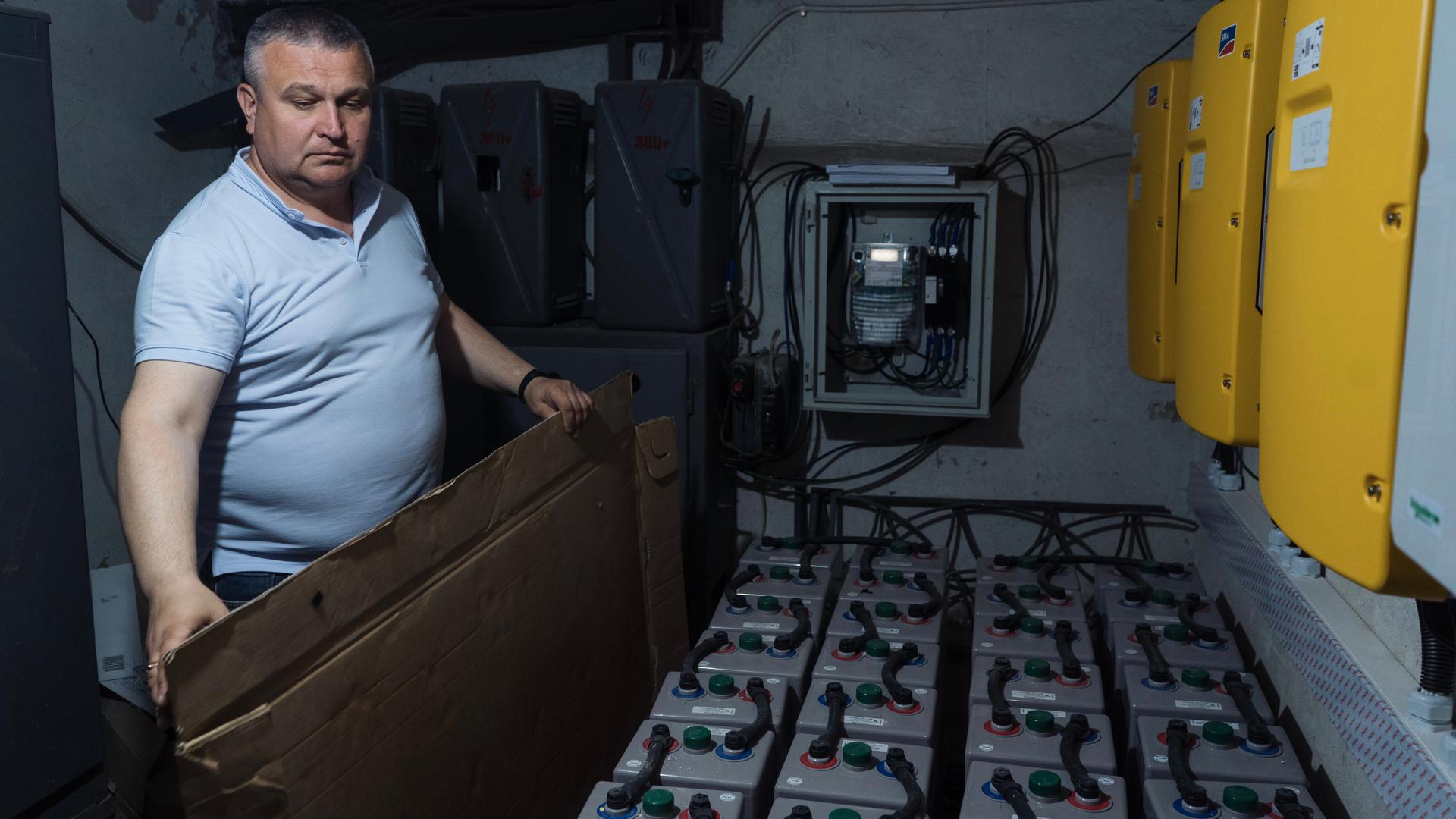Last fall and winter, Russian attacks on Ukraine’s energy infrastructure knocked out more than half of the country’s capacity to generate electricity. According to UN estimates, the average Ukrainian household spent five of the final 12 weeks of 2022 without power.
Generators helped keep the lights on in many homes and businesses, but they were noisy, susceptible to breakdown and required a steady supply of diesel to keep them humming along.
“At some point, too many of those generators came to Ukraine,” said Andrii Korol from the Energy Act for Ukraine foundation. “You walk on the street, it’s like a street of generators.”
Widespread blackouts are over for now, but Korol and others in Ukraine say the increased focus on energy security has raised interest and demand for renewable energy.
Energy Act for Ukraine, which launched last April, is outfitting schools and hospitals with what it sees as a better alternative to generators: backup batteries that are charged by solar panels. The foundation aims to deploy 150 of these systems in Ukraine and has completed projects at two hospitals and one school so far.
The school, which serves more than 2,000 students in the city of Irpin, was “able to function non-stop” through the winter thanks to the solar panels on the school’s blue corrugated metal roof, according to director Ivan Ptashnyk.

“There were in-person classes during winter, during blackouts, where students were in classes and were using power thanks to the solar panels,” Ptashnyk told The World through an interpreter earlier this summer.
The rooftop solar panels charge up a bank of batteries in the school’s basement that can meet the school’s critical energy needs for the eight-hour school day, Ptashnyk said, including powering lights in classrooms, the basement bomb shelter and the internet.
The school also has a generator, but the solar energy, Ptashnyk said, is free.
“We don’t pay a dime for it, and this is our future.”
Ptashnyk is not alone in that view.

The Ukrainian government outlined ambitious targets for renewables last year in its national recovery plan. President Volodymyr Zelenskiy said the country will become “a leader in building modern green energy.”
DTEK, Ukraine’s largest private power producer headed by Alexander Selischev, is also touting its small but growing renewables business.
“Now we understand, especially after this winter, that energy matters,” Selischev said. “And more and more, our authorities, investors, general public understand that energy security and renewables, it’s like the same.”
All eight of DTEK’s traditional thermal power-generating stations have been damaged by Russian strikes or occupation, according to Selischev.
Most of the country’s wind turbines are currently in occupied territory, but at least renewables can be more dispersed, Selischev said, less centralized and vulnerable to attack.
“It’s much harder to destroy thousands of turbines than destroy one thermal block,” Selischev said. “So, it’s more safe.”

The company recently finished construction on the first phase of a new wind farm in southeastern Ukraine, just 60 miles from the front lines. It produces enough energy to power a small city, and Selischev said that completing it amid frequent air attacks sends an important message.
“We believe that our industry, our country, has a future, and we continue construction,” he said.
The Ukrainian government is seeking to align itself more closely with Europe, including its energy sector. But it would need to roughly double its prewar renewable energy capacity to bring it up to the European average. So far, it’s rare to see solar panels on a rooftop in Ukraine, “but that’s already started to change,” said Hanna Rutkovska, a renewable energy expert at a leading Ukrainian environmental organization called EcoAction.
Rutkovska told The World that interest in renewables has spiked since the full-scale invasion started.
“And I think that it changed because people who had money said, ‘Okay, I actually can give these high upfront costs, but I will have [an] energy supply during disruption,’” she said. “‘It will make my life normal — I want to work,’ and renewables became this option for people.”
EcoAction is offering grants to organizations launching renewable energy and energy efficiency projects. It has seen a strong demand for applications. It’s also installed solar panels and a heat pump at a hospital outside of Kyiv.
“I think that during the recovery, we’ll see much more of these projects,” she said.
But to translate these small projects into a national energy transition, Rutkovska believes the national government needs to make clear whether it’s prioritizing renewables over other power sources as it seeks international funding to rebuild.
“We are talking a lot about it, and we see the Ukrainian government talking a lot about it,” Rutkovska said of a renewable-fueled recovery. “But we also need actions, and we need a clear plan and roadmap in our head.”
Some more details emerged last week during a conference at which Ukraine courted international funding for rebuilding in London. The Ministry of Energy announced new targets for expanded wind, solar and energy storage capacity by 2050. But Rutkovska said the government still hasn’t released the kind of renewable energy roadmap that experts like her are watching for.
Related: A year of war in Ukraine: A timeline of key moments
The story you just read is accessible and free to all because thousands of listeners and readers contribute to our nonprofit newsroom. We go deep to bring you the human-centered international reporting that you know you can trust. To do this work and to do it well, we rely on the support of our listeners. If you appreciated our coverage this year, if there was a story that made you pause or a song that moved you, would you consider making a gift to sustain our work through 2024 and beyond?
